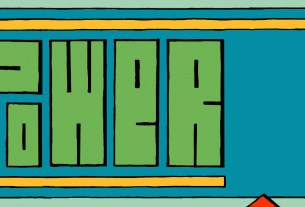Chief technology officer is a role that won’t always be consistent across every organization. While CPOs, CFOs, and even CEOs generally have similar roles and responsibilities, the CTO’s job can vary widely depending on how much they participate in product development, R&D, and selling the business as a whole.
At highly technical startups, a CTO will be expected to work closely with the product, taking technical responsibility for its development and success. At less technical startups, this type of hands-on leadership is less important. The head of product and CTO can be two different people. The same applies to R&D: At some startups, the CTO will report to the VP of R&D; at others, one person handles both jobs.
This all means that no two CTOs will have the same typical workday. In my role, I am both CTO and co-founder of a cybersecurity startup, together with our president and our CEO. I’m ultimately responsible for the technology and our R&D efforts in this role. Since people are counting on me for good technology, I’m highly motivated to drive good R&D.
Weekly cadences
Given the scope of the job, a CTO is rarely going to have a consistent daily schedule. Instead, goals and cadences are established weekly. That being said, I do go into the office every day. My typical workday begins at 9:30 a.m., and I take an electric scooter to get into the office. Our headquarters are located in Tel Aviv, so the weather is almost always perfect for the scooter.
[ Also read CIO: A day in the life. ]
On a weekly basis, I hold one-on-one meetings with specific managers to understand team needs, review KPIs to ensure they’re being met, and review our proof-of-concept (POC) projects to ensure our customers and potential customers are advancing. These POC reviews are where we often catch technical issues, allowing us to fix them before they cause problems for our customers.
While I’m responsible for several employees within our R&D department, I do my best to distance myself and empower our VP of R&D to manage the team. The goal is quality – not getting bogged down in how or when people work.
I usually wrap up my time in the office around 6:30 or 7:00 p.m. However, the difference in time zones between Israel and the United States (where we have our second headquarters) means that I sometimes have to hold calls late at night with customers. I usually get involved in these conversations during the middle stages instead of the earliest stages, helping to communicate with our most technical customers so that they begin to understand and trust the product.
Long-term values, short-term benchmarks
A good president or CEO is responsible for vision, imagining where the world will be in two or three years, and then leading a company that will thrive in that environment. Instead of focusing on long-term vision, a good CTO should focus on long-term values. I want to ensure that our technology and product are built efficiently, serving our customers’ current and future product requests. Taking my cues from the company’s overall vision, I establish specific technology goals and then choose the right frameworks, databases, and people to meet those goals.
On a short-term basis, I like to be hands-on with our technology. There will always be areas in the code or the product that need attention, either because they lag or require approval. I get involved in architecture, design, coding, reviews, and R&D, looking for the areas that need attention and working efficiently to solve the problems. While our VP of R&D manages his team, I define and measure KPIs for that team. Regardless of the type of organization or the CTO’s role, good metrics are essential to ensure the company hits its goals.
Meeting-averse
Not all meetings are bad. Sometimes meetings are an excellent way to focus people’s minds on a particular subject. Projects like design reviews should be like reading a book or watching a movie – focusing everyone’s attention on a single story and letting yourself get lost in the details. But beyond these specific projects, I avoid standing meetings on my calendar; there’s always a more efficient way to solve the problem.
The past three years have proven what we can accomplish asynchronously. I’m a big fan of WhatsApp audio messages and am happy to use Slack or text messaging to replace meetings. Or if there are a lot of people in the office, five-minute ad hoc meetings can be far more productive at addressing targeted challenges.
I believe that the CTO’s role is less about official day-to-day responsibilities and more about the type of leadership they want to demonstrate. There’s no right or wrong path to success. A good CTO will lean into their strengths and empower others to fill in the gaps. The only essentials are leadership skills and a good work ethic – showing that you’re willing to do what it takes for the company to succeed long-term.
[ What is a ‘day in the life’ like in your role? If you’d like to participate in this series, reach out here! ]



